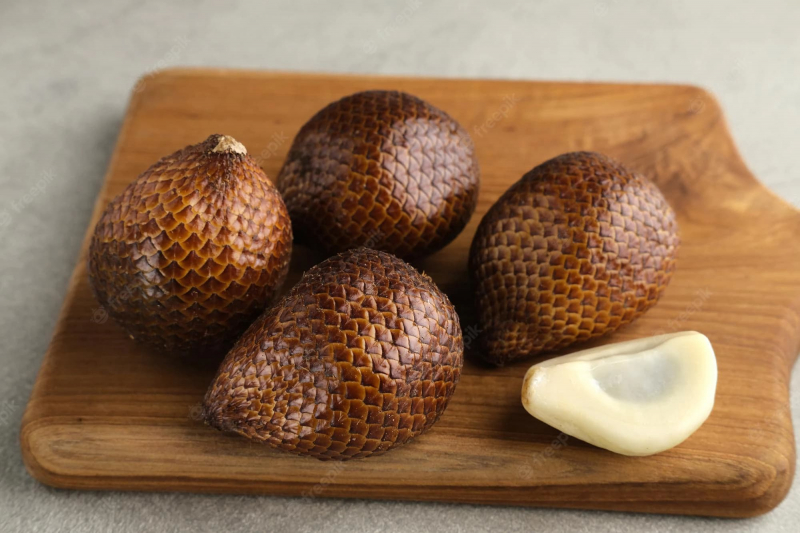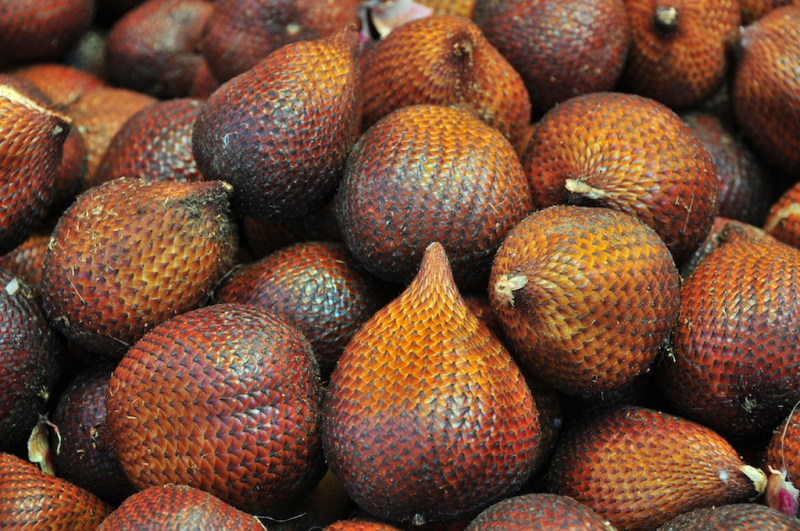Salak
Salak (Salacca zalacca) is a species of the palm tree (family Arecaceae) native to Java and Sumatra in Indonesia. It is cultivated in other regions of Indonesia as a food crop and is reportedly naturalized in Bali, Lombok, Timor, Maluku, and Sulawesi. The salak tree has been cultivated throughout Indonesia, and there are at least 30 cultivars, most of which have an astringent taste and are sweet. Two popular cultivars are salak pondoh from Yogyakarta province (found in 1980s) and salak Bali from Bali.
It has very short stems with leaves that can reach 6 meters (20 feet) in length. Each leaf also has several leaflets and a 2-meter-long petiole with spines that can reach 15 centimeters in length. Due to their reddish-brown scaly coating and clustered growth near the base of the palm, the fruits are also known as snake fruit. They have a distinct tip and are roughly the size and shape of a ripe fig. The pulp can be eaten. Pinching the fruit's tip should cause the skin to slough off so that it may be removed away from the fruit. The fruit inside consists of three lobes with the two larger ones, or even all three, containing a large inedible seed. The taste is usually sweet and acidic, with a strong astringent edge, but its apple-like texture can vary from very dry and crumbly (salak pondoh from Yogyakarta) to moist and crunchy (salak Bali).












